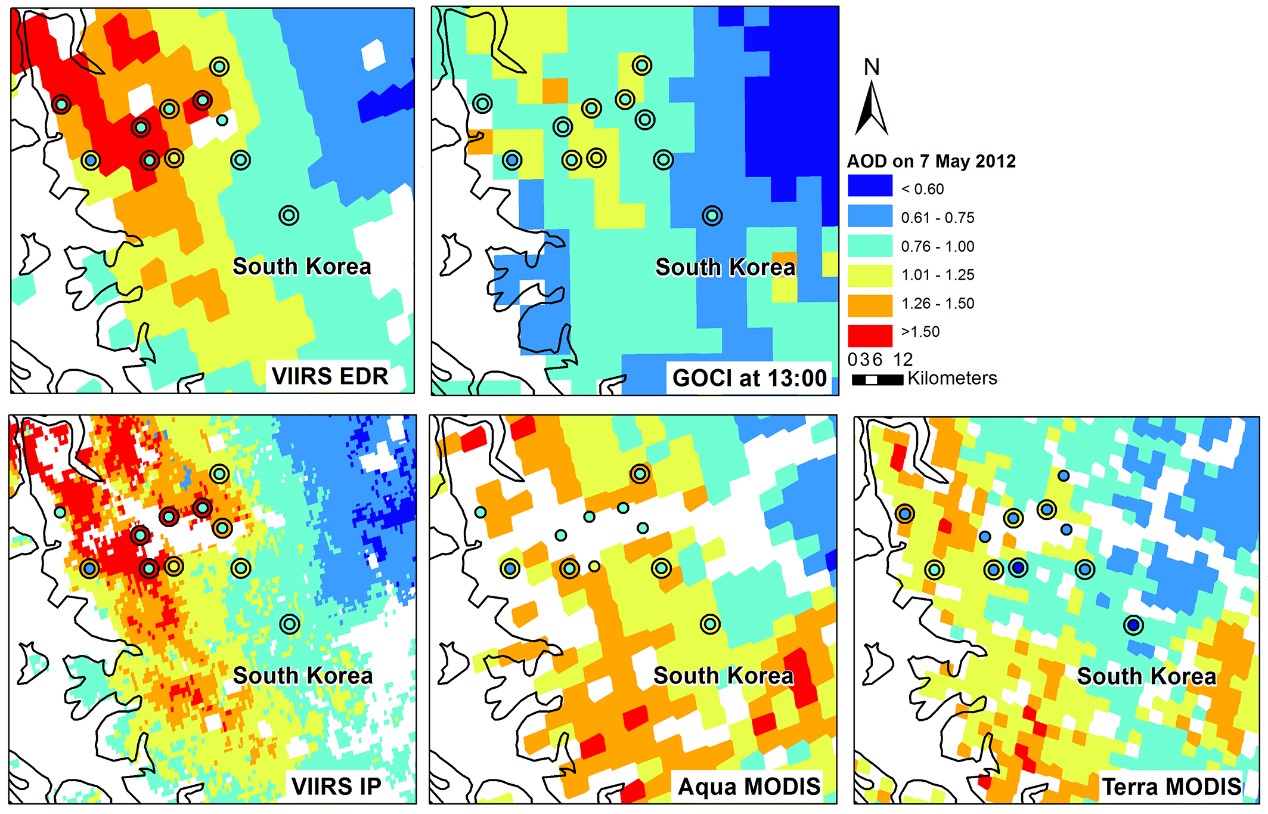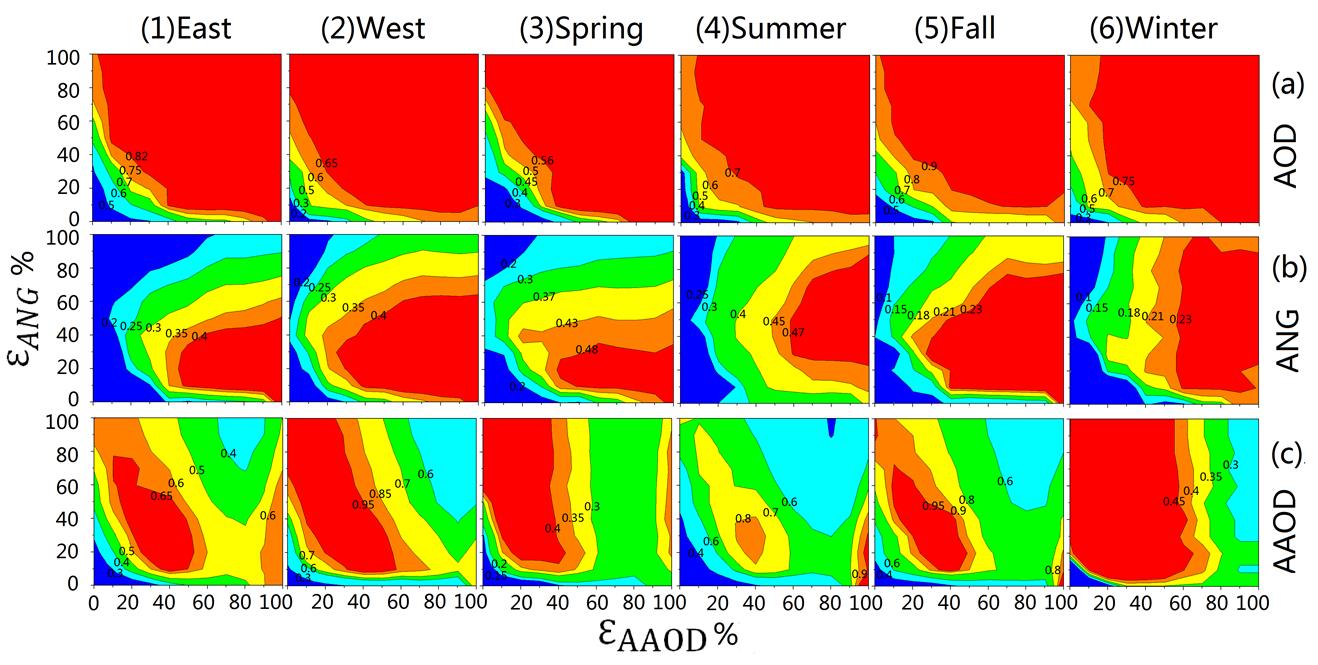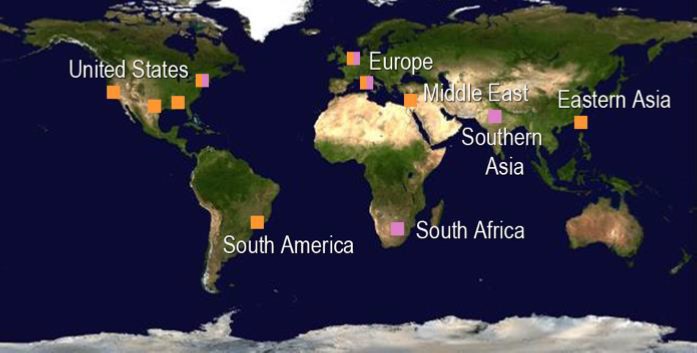Satellite Remote Sensing
Although satellite remote sensing has been
used to study air pollution events since the 1970s, most quantitative
studies began after the launch of NASA’s Terra satellite in December
1999. Currently the most widely used aerosol sensors include the Moderate Resolution Imaging SpectroRadiometer
(MODIS), the Multiangle
Imaging Spectro Radiometer (MISR), the Visible Infrared Imaging Radiometer Suite (VIIRS),
and the Cloud-Aerosol
Lidar and Infrared Pathfinder Satellite Observations (CALIPSO).
can readily retrieve is aerosol optical depth (AOD). AOD measures
column aerosol extinction and has been widely used in estimating
ground level PM2.5 concentrations. Specialty sensors such as MISR can
also retrieve particle size (Ångström exponent), sphericity, and
single scattering albedo (SSA) under good observing conditions. In
addition to using the standard products from NASA and NOAA, our group
works closely with the NASA science teams to conduct extensive
evaluation of these parameters and develops approaches to improve
their quality.
Example: comparison of various AOD retrievals during the DRAGON Asia
campaign in May 2012 (Xiao et al. ACP, 2016).

Example: seasonal sensitivity analysis for correlations between
adjusted MISR (a) AOD, (b) ANG, (c) AAOD and AERONET by thresholds of
ANG and AAOD (Li et al. AMT, 2015).

In March 2016, we were selected by NASA to participate in the
development of the next generation aerosol sensor, the Multi-Angle Imager for Aerosols (MAIA). The
MAIA investigation’s primary objective is to determine the relative
toxicity of different PM components and to assess the impacts of
particle size and composition on adverse birth outcomes,
cardiovascular and respiratory disease, and premature deaths. MAIA’s
unique instrument design and innovative data processing software will
generate comprehensive information on particle size distribution,
shape, and light scattering and absorption properties at 1 km spatial
resolution for a set of globally distributed target areas. MAIA will
be the world's first environmental health satellite instrument.



